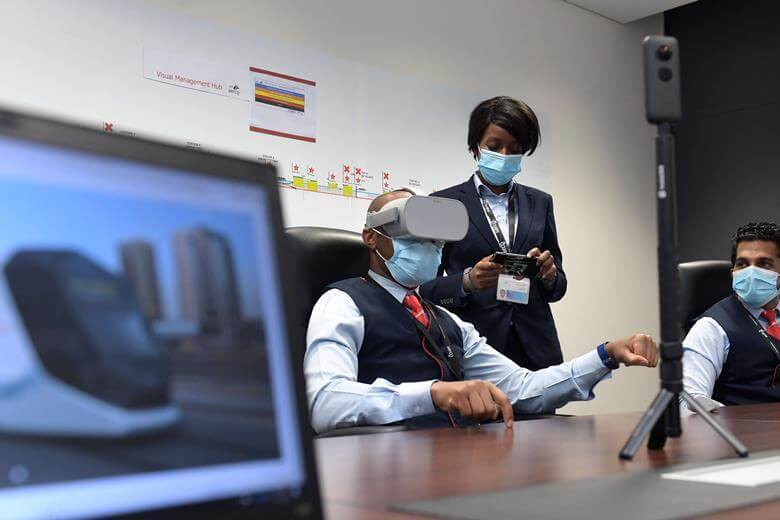Welcome to our recurring post, Rail Tech Talk, highlighting how technology is helping the Rail Industry move forward.
Spain’s Railway Infrastructure Adopts Simulated Training Technology
 Adif has adopted forward-looking simulated training technology capabilities, going all-in with “virtual reality rooms [and] augmented reality-equipped computers.” Offering programs that require students to assemble, installation or control mock-ups from within the classroom.
Adif has adopted forward-looking simulated training technology capabilities, going all-in with “virtual reality rooms [and] augmented reality-equipped computers.” Offering programs that require students to assemble, installation or control mock-ups from within the classroom.
Using a computer simulation of the electrical system powering the Spanish high-speed rail network identical to the one used in the OCC in Albacete, students can learn to operate the system and identify and rectify faults without the pressure of working on an operational line.
This capability offers students the ability to perform dangerous tasks without putting themselves in danger – and without potentially damaging delicate equipment. It also allows for training on emergency situations that they could never replicate in-person otherwise, leaving them only theoretically prepared to handle them. Safety is the number one benefit of simulation training as it offers muscle memory on activities that have traditionally been tested as they happen, resulting in fatalities.
Adif’s expanded also simulation allows students to work together on problems and solutions. “[And] instead of getting all students and tutors in one room to take the test, this can instead be done remotely, with a smartphone used for student – tutor communication.”
Interactive Tram Driver Training in Dubai
 RTA’s Rail Agency has launched VR-based training to give trainees experience handling various scenarios “to hone their skills of controlling trams and avoiding incidents.” The goal is to enhance safety for passengers, as well as “drivers’ reactions towards anticipating and avoiding the mistakes of others.”
RTA’s Rail Agency has launched VR-based training to give trainees experience handling various scenarios “to hone their skills of controlling trams and avoiding incidents.” The goal is to enhance safety for passengers, as well as “drivers’ reactions towards anticipating and avoiding the mistakes of others.”
Similar to Adif and other locations worldwide, RTA recognizes the potential simulation training offers. It reduces risk to personnel and prevents unnecessary wear and tear on expensive equipment, while offering training and exceptionally challenging scenarios that would not be available for practice in real life.
Moving forward, they already have plans for future VR implementations to “support maintenance, risk assessments, incident investigations and safety training.”
Be sure to check out our Rail Virtual Training Solutions to see why BNSF, CSX, NS, UP, & KCS partnered with Heartwood to deploy a variety of railroad training simulations and guides. And if you have any questions about these technologies, please reach out!


